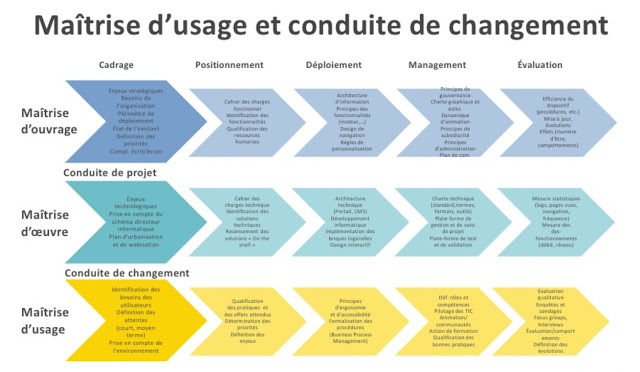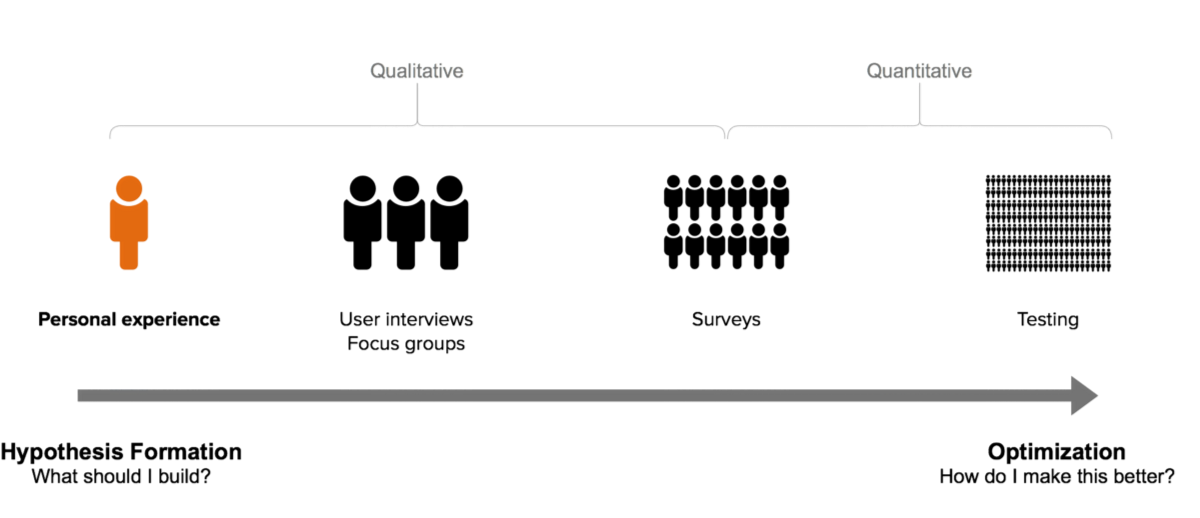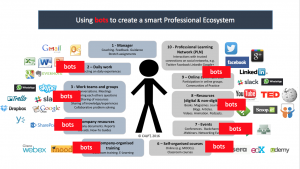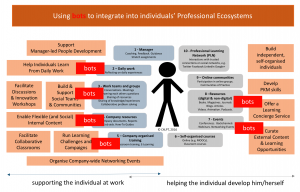-
Bosch, une transformation numérique à 2 milliards d’euros
“L’équipementier allemand Bosch prend le virage de l’Internet des objets dans tous ses métiers, avec l’objectif de connecter à terme 100% de ses produits. L’une de ses priorités réside dans l’industrie du futur. Un domaine où il espère réaliser 1 milliard d’euro de productivité en interne et un chiffre d’affaires de 1 milliard d’euros en 2020. “
-
100% de nos produits seront à terme connectés.”
-
la stratégie de l’équipementier allemand se résume en trois lettres : 3S pour “Sensors, Software, Services”, c’est-à -dire les capteurs pour remonter des informations des produits, les logiciels pour les analyser et les traiter, et les services, but ultime de la connectivité.
-
Nous avons la chance de disposer d’un réseau de plus de 250 usines dans le monde, affirme le président de la filiale française. Nous voulons profiter de cette base industrielle importante pour utiliser nos solutions numériques d’abord en interne, avant de les proposer ensuite à nos clients. Cela convaincra d’autant plus l’extérieur qu’elles auront de la valeur pour nous-mêmes.
-
Récemment, le groupe a lancé Bosch Global Services Solutions, une division de services cloud
-
100% des appareils électroménagers connectés à partir de 2017
-
Bosch a mis en place un fonds d’investissement, Robert Bosch Venture Capital de 150 millions d’euros
-
-
MOA, l̢chez prise sur la maitrise des usages РGreen.SI
“Le maître d’ouvrage est l’entité porteuse du besoin, définissant l’objectif du projet, son calendrier et le budget consacré à ce projet. La maîtrise d’ouvrage maîtrise l’idée de base du projet et représente, à ce titre, les utilisateurs finaux à qui l’ouvrage est destiné.
Et c’est bien la fin de la phrase qui pose de plus en plus problème !”
-
Ce sont bien leurs utilisateurs qui en ont décidé par leurs usages et pas une maitrise d’ouvrage “sachante” et tout puissante.
-
Elle s’est aussi développée dans les débuts de l’internet pour désigner une famille de métiers comme l’ergonome et le spécialiste de l’accessibilité.
Dans l’entreprise elle s’est développée dans les intranets (des applications souvent multi-MOA entre la DSI, la DirCom et la DRH) quand des groupes d’utilisateurs étaient systématiquement associés pour trancher sur la construction et l’évolution de ses services. -
-
Ce nom de “maitrise d’usages” n’a pas encore percé dans l’entreprise, pourtant elle est bien déjà là , sous diverses formes: “design thinking“, “open innovation“, “hackathons“, “living labs“, “co-construction“, “maquettage, prototypage“, “fab lab“..
-
Il faut aussi séparer maîtrise d’ouvrage et maîtrise d’usages, pour éviter les conflits d’intérêts entre le projet et les usages. Les usages sont seuls la véritable finalité du projet. Un projet livré non utilisé ne sert à rien !
-
-
Why Procter & Gamble Is More Disruptive Than You — Medium
“Of course, many companies at scale can’t depend on their employees to just be the target market. It’s too limiting. When you’re trying to move from hypothesis formation to an optimizable product at scale, you need a tool that can let you enter the minds of target markets that you can’t natively represent to substitute for personal experience.”
-
-
Yes, the guys who make dandruff shampoo, diapers, and laundry detergent and sell ~17% of this stuff through thoroughly uncool Walmart — yes, those same guys are more disruptive than you.
-
You don’t accomplish that without constantly inventing and reinventing products, disrupting yourself and competitors simultaneously.
-
Instead of relying on the personal experiences of their employees, P&G borrows a page from the playbook of anthropologists — they find relevant cultural groups to study and embed their employees where they live for a period of time, participating in their day to day lives to gather holistic data:
-
Product managers pay a lot of lip service to knowing the customer. But how many of them would spend a week living in Mexico and working at a bodega?
-
You can build great intuition around target group behavior if you’re willing to embed yourself in your target demographic’s day-to-day life
-
-
Les enjeux en chaîne de la blockchain
“La blockchain a été popularisée par le Bitcoin, la crypto-monnaie reposant sur cette technologie. Système de contrôle décentralisé et infalsifiable, cette « chaîne de blocs » ouvre de larges opportunités. “
-
Sur le principe, la blockchain permet de valider des transactions sans intervention humaine, ni tiers de confiance. Ces « contrats intelligents » (smart contracts) s’auto-exécutent selon des règles prédéfinies
-
Le côté irréversible et auditable de la blockchain présente également un intérêt évident en matière de traçabilité et de conformité
-
Autre axe de développement : l’internet des objets. La blockchain permettra à des objets de communiquer entre eux sans passer par un système centralisé. Ils pourront aussi proposer des services de façon autonome. Par exemple, le modem ADSL d’un particulier pourra, durant la journée, fournir un service wifi public et le monnayer sans intervention de son propriétaire.
-
Les infrastructures derrière ne sont pas encore là .
-
-
The Future of Work and Learning 2: Chatbots
” In this post I want to look at how individuals might make use of chatbots to build smart Professional Ecosystems, and how organisations might use them to provide intelligent access to their own content and services as well as offer personalised support to individuals.”
-
-
- personalised recommendations about internal or external courses and training
- a personalised feed of relevant curated content
- on demand personalised productivity and performance support
- a virtual learning coach or assistant (see this example of a university teaching assistant)
- a virtual learning concierge service (perhaps something along the lines of this Radisson Blu hotel concierge bot)
When it comes to L&D how might bots fit into their work? Well, they could be created = as I highlight on the diagram from an earlier post – to provide …
-
-
-
What Platforms Do Differently than Traditional Businesses
“One of the oldest business models in the world is using new technology to trample traditional businesses, drive innovation, and create new and immense sources of value. Matchmakers, the subject of our new book, make it easy for two or more groups of customers, like drivers and riders in the case of Uber, to get together and do business. They operate platforms that make it easy and efficient for participants to connect and exchange value.”
-
they recruit participants, and then sell each group of participants access to the other group of participants.
-
Gig economy companies connect workers with consumers who need them, such as home care workers with families that need help, while sharing economy ones match up unused capacity, like automobiles, with people who want to rent them.
-
Matchmakers have to solve the hardest problem in business — a critical mass of two or more groups of participants who value the service will sign on only if they can get access to the other groups of participants.
-
Many successful matchmakers violate the rules of pricing that every beginning econ student learns. They sell their services to one group for less than cost, maybe even giving it away for free, or perhaps providing rewards.
-
Most significant matchmakers have something that no traditional business has — an elaborate governance system of laws, enforcement, and penalties to keep their participants in line
-
Companies like Uber wouldn’t exist, for example, without the development of mobile broadband, mobile software platforms, and the internet.
-
We bring to bear great optimism that the turbocharged matchmakers will power a gale of creative destruction that will sweep across the economy and produce great social value.
-
But our views are tempered with realism that most who try this business model will fail miserably, after burning through mountains of cash.
-
-
The Supply Chain Goes Digital: Opportunities And Challenges
“This transformation has impacted, and will continue to impact, the business processes and systems that are required to remain competitive. It will change how we design, plan, make, ship, and operate our products and assets.”
-
- Customer-centricy: Customers demand a new type of experience. Omnichannel sales strategies have raised the bar when ordering products and services. You can now order goods from anywhere, on any device, at any time. But companies need to change business processes to ensure the same level of service in designing, producing, planning, and delivering these products.
- Personalized “lot size†of one: Businesses must be prepared to sell to a market of one. Closely aligned with customer-centricity are the design, manufacture, and distribution of individualized products. Design processes must deliver all practical configurations and combinations, planning and manufacturing processes geared to support “lot size of one†production and delivery processes that profitably support smaller and more frequent shipments.
- A network of networks to drive the sharing economy: As businesses expand globally, the ability to successfully operate within business networks will mean the difference between winning and losing. These networks – and networks of networks – will be the platforms on which successful businesses innovate, collaborate, grow, and continually evolve – at both speed and scale. For example, networked companies are 50% more likely than their peers to have increased sales and higher profit margins. Automated collaboration with suppliers can improve efficiency by 50%. Companies need to focus on being demand-driven and responsive, and thereby transforming their previously linear supply chain into a customer-centric demand network.
- Sustainability to mitigate resource scarcity: Sustainability is no longer a corporate social responsibility afterthought. It is a contemporary business imperative for addressing the global shortage of resources and talent. Sustainability includes innovation and design processes that deliver sustainable products to the market; a product stewardship network that manages global product safety and compliance throughout the product lifecycle; and track-and-trace solutions to ensure visibility from raw materials to finished products and contain the effects of product recalls.
-
-
Digitizing Financial Services Is Not Just About Your Customer Experience
“Financial services is certainly an interesting case study. The recent SAP and CIO Magazine ANZ Digital Transformation Research Report shows that all financial services respondents said they were focused on digital transformation to meet the objectives of outcome-based customer experience and improvements across all channels.”
-
t. It’s not just about providing better customer service. It’s about updating IT platforms, preparing core business functions, building business networks, and tooling up internal workers, too.â€
-
Placing a “digital umbrella†over the whole organization, from back to front, is what will truly bring your digital transformation to life.
-
with many companies complaining that cost and complexity is the biggest barrier to agility and success.
-
Phase 1 – Back-office automation to reduce the cost of running the business and support the potential to innovate into new services and business models
Phase 2 – An open digital ecosystem to be open to partnering with external organizations to provide a complete service to customers and employees; not all capabilities need to be built and provided in-house in the digital economy
-





